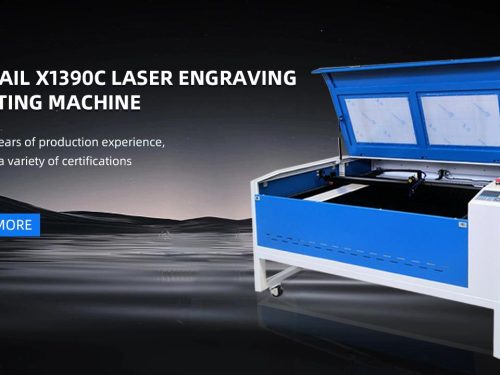

Laser cutting machines are suitable for cutting materials:
(1) Carbon steel plate cutting:
Modern laser cutting systems can cut carbon steel plates with a maximum thickness of approximately 0.1mm, and the cutting seam of thin plates can be narrow to around 0.1mm. The Heat-affected zone of laser cutting low-carbon steel is very small, flat, smooth, and good perpendicularity. For high carbon steel, the edge quality of laser cutting is better than that of low carbon steel, but its Heat-affected zone is larger.
(2) Stainless steel cutting:
Laser cutting makes it easier to cut stainless steel plates. The YAG laser cutting system can cut stainless steel with a maximum thickness of 4mm.
Most alloy steel can be cut with laser, and the quality of the cut edges is good. However, tool steel and hot mold steel with high tungsten content will have corrosion and slag sticking during laser cutting.
(4) Aluminum and alloy plate cutting:
Aluminum cutting belongs to melting cutting, which assists in blowing away the molten material in the cutting area with gas, which can achieve better cutting quality. At present, the maximum thickness for cutting aluminum plates is 1.5mm.
(5) Cutting other metal materials:
Copper is not suitable for laser cutting as it is very thin. Titanium, titanium alloys, and nickel alloys can be cut by laser.
Laser cutting processing uses invisible beams of light instead of traditional mechanical knives, with high accuracy, fast cutting, not limited to cutting patterns, automatic layout saving materials, smooth cuts, low processing costs, and will gradually improve or replace traditional metal cutting process equipment.
The mechanical components of the laser blade have no contact with the workpiece, and will not scratch the surface of the workpiece during operation; Laser cutting speed is fast, the incision is smooth and flat, and generally does not require subsequent processing; The cutting Heat-affected zone is small, the plate deformation is small, and the cutting seam is narrow (0.1mm~0.3mm).
The incision is free of mechanical stress and shear burrs; High machining accuracy, good repeatability, and no damage to the material surface; CNC programming, capable of processing any floor plan, capable of cutting large plates, without molds, economical and time-saving.
Copper is not suitable for laser cutting as it is very thin. Titanium, titanium alloys, and nickel alloys can be cut by laser.
The application directions of laser cutting equipment in the market mainly include the following three categories:
The first type is processing materials used for decoration, advertising, lighting fixtures, kitchen utensils, sheet metal parts, electrical cabinets, elevator panels, engineering boards, and high and low switch cabinets. Generally, they are relatively thin, and stainless steel plate materials with a thickness of 1-5mm can be cut using a medium power laser cutting machine. The cutting of this material can consider purchasing a YAG laser cutting machine or a fiber laser cutting machine.
The second type is cutting plastic (polymers), rubber, wood, paper products, leather, and natural or synthetic organic materials, as these items are not metal products and laser absorption is also different. Therefore, it is best to use CO2 cutting laser cutting machines for this type of material.
The third type is 8-thick low-carbon steel and stainless steel. This material requires a high-power laser cutting machine to cut quickly and immediately. You can consider purchasing a high-power fiber laser cutting machine or a high-power laser cutting machine CO laser cutting machine.
Therefore, when choosing laser equipment, it is not only necessary to consider the characteristics of one’s own product materials, but also the performance of the laser equipment, in order to find a suitable laser equipment for one’s own industry products.









